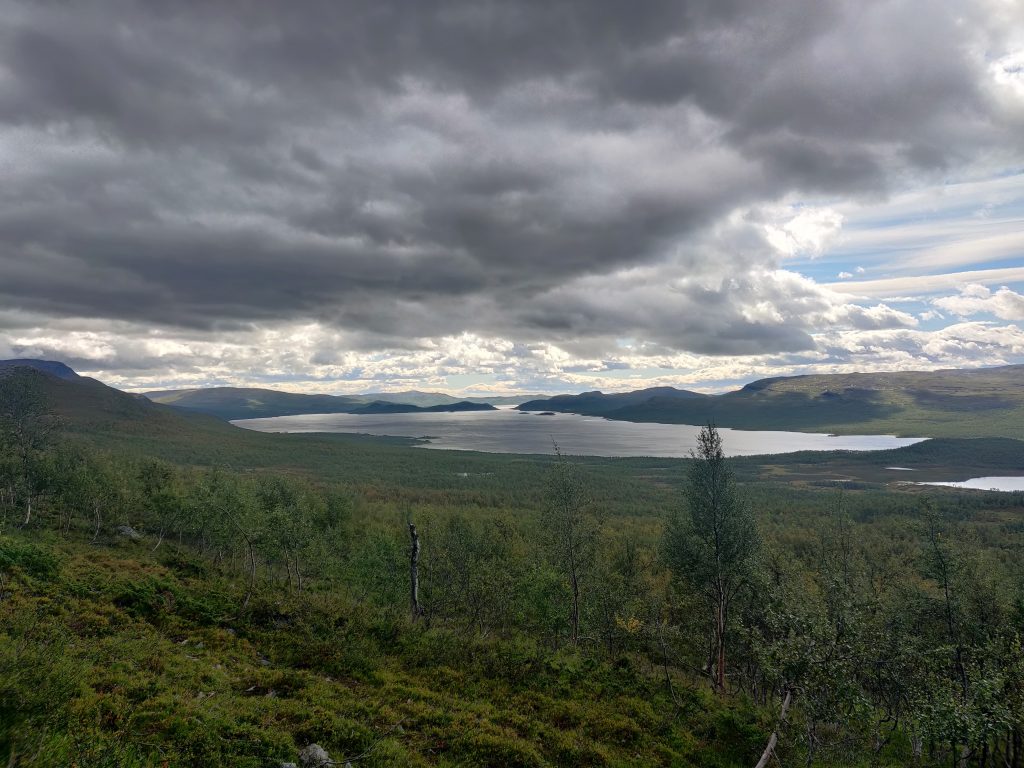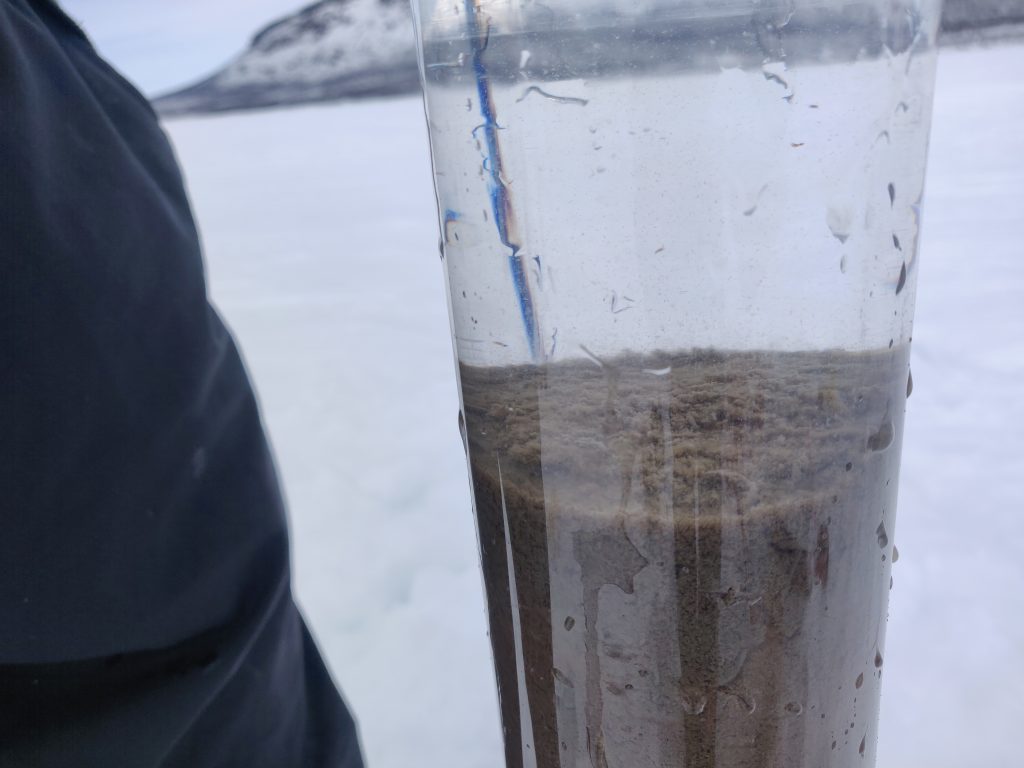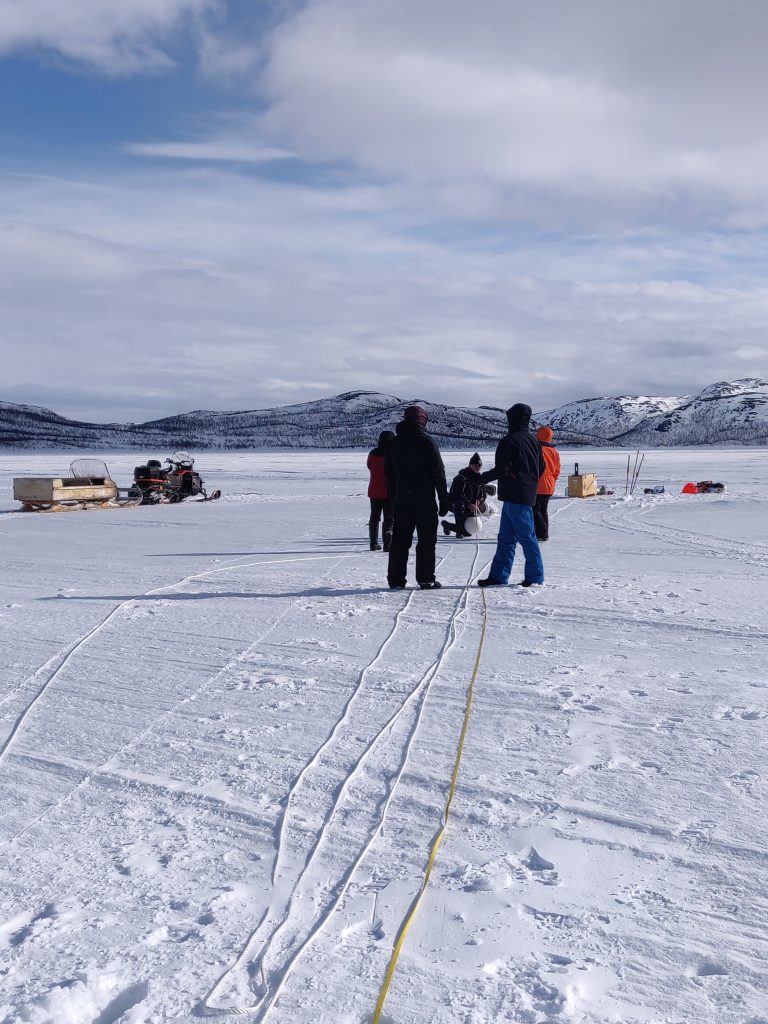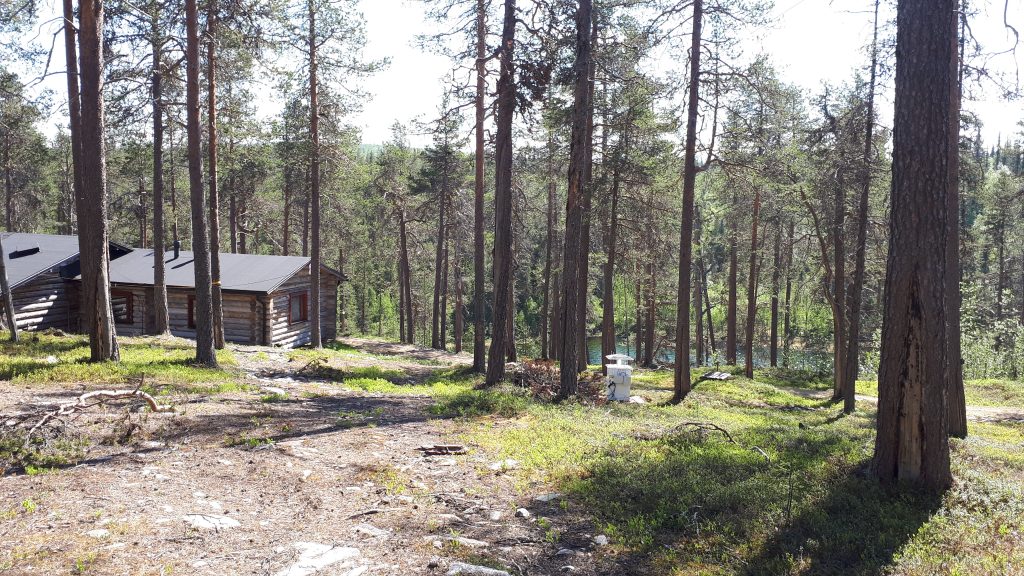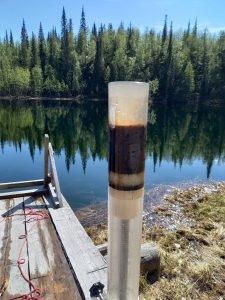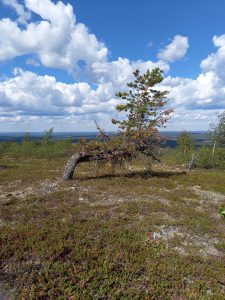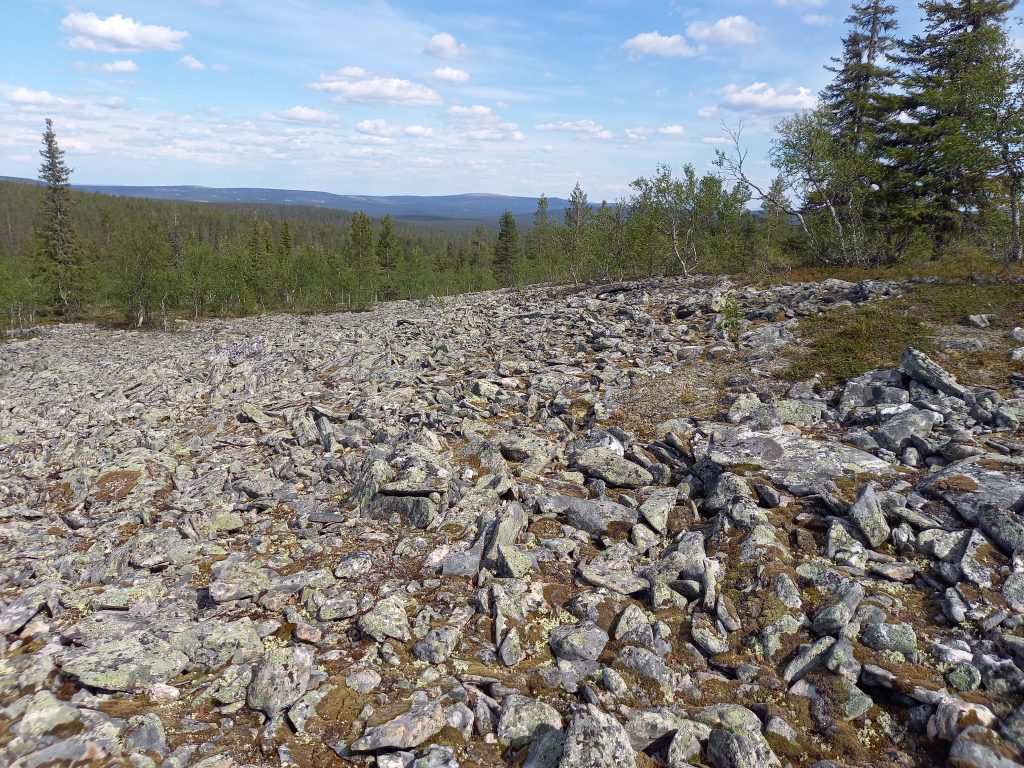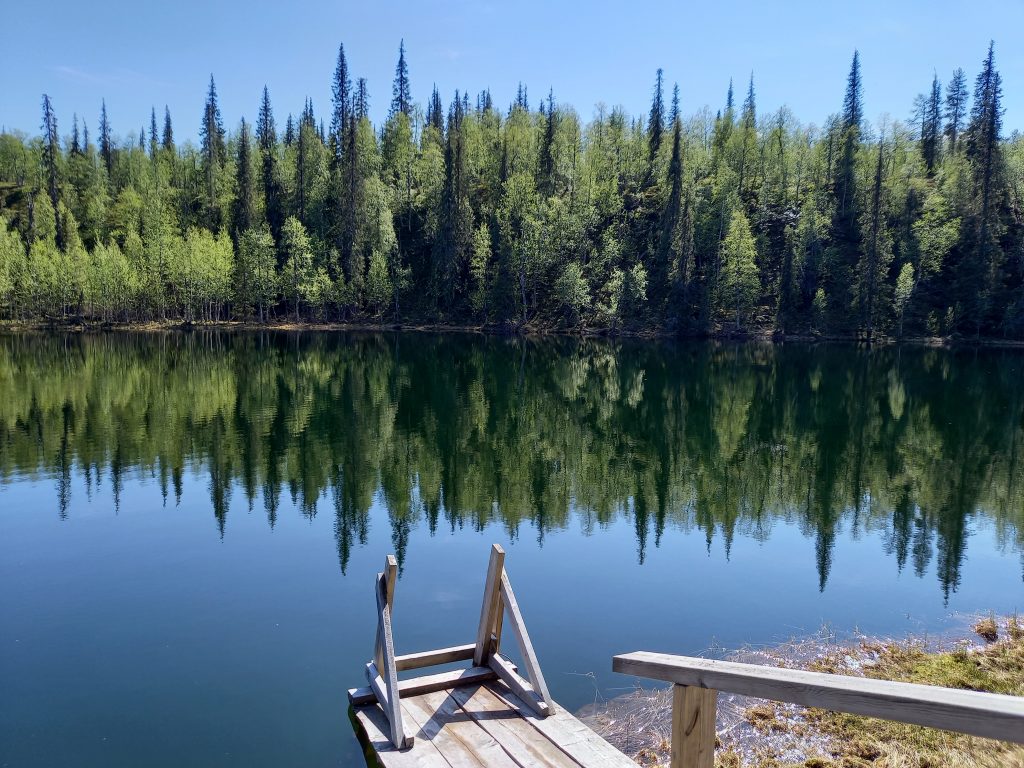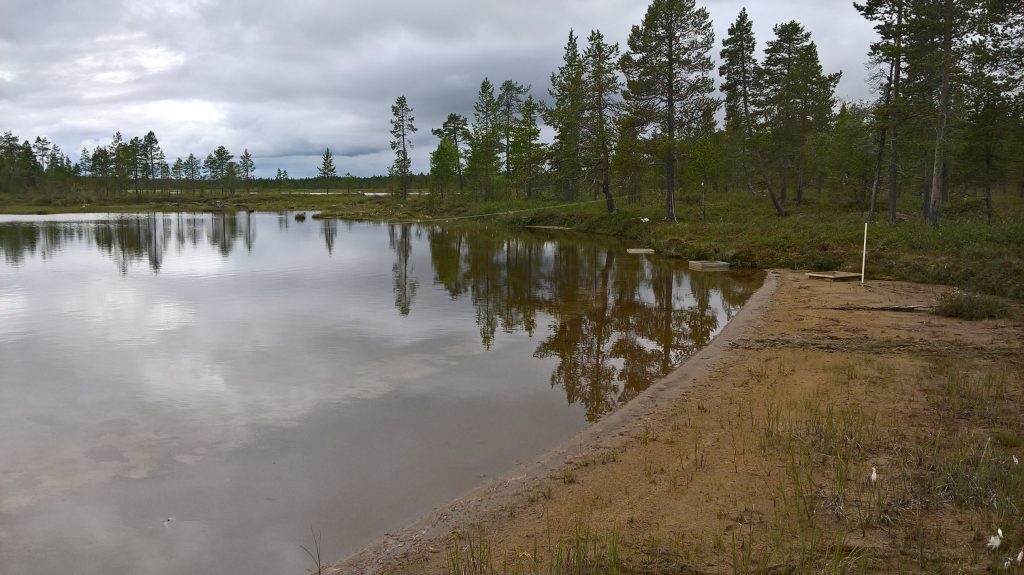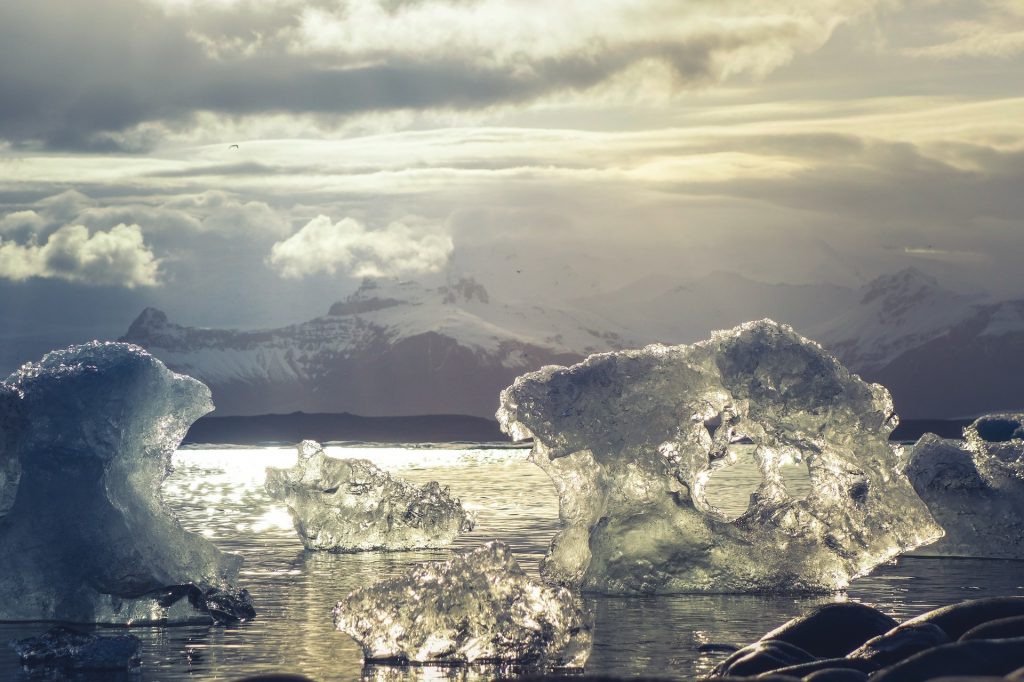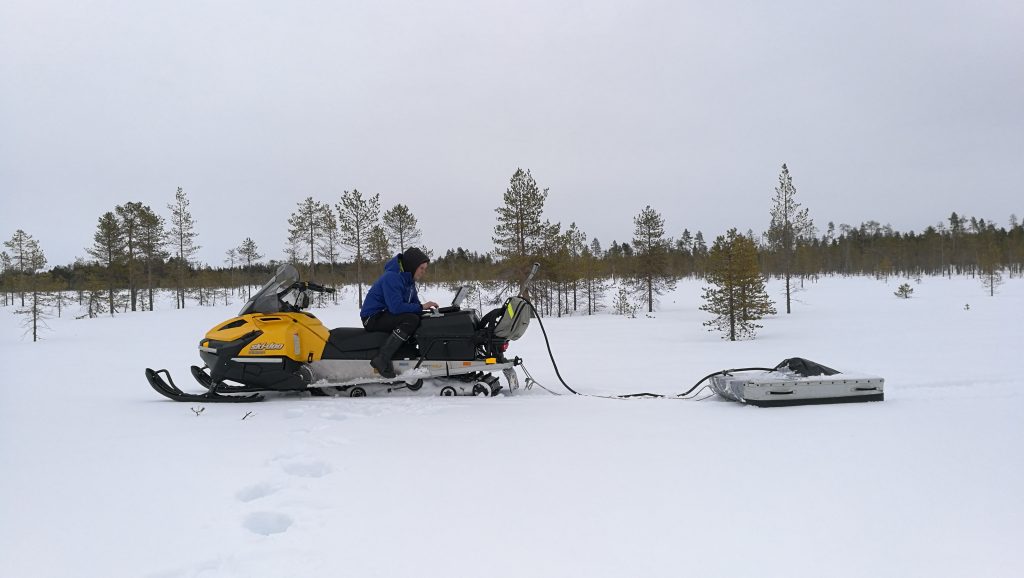Iiris Lahin
Järvillä on merkittävä rooli globaalissa hiilenkierrossa. Maapallon pohjoisilla alueilla on määrällisesti ja pinta-alallisesti paljon järviä, minkä vuoksi järvien rooli hiilen kierrossa on merkittävä. Järvet myös varastoivat valuma-alueelta huuhtoutuvaa hiiltä, jonka määrän on ennustettu lisääntyvän ilmastonmuutoksen ja ikiroudan sulamisen myötä.
Järvet voivat sitoa hiiltä ja varastoida sitä pohjaan kerrostuvaan sedimenttiin tuhansiksi vuosiksi tai vastaavasti vapauttaa hiiltä takaisin ilmakehän lyhyeen hiilenkiertoon. Lyhyellä aikavälillä järvet ovat yleensä hiilen lähteitä (Holmberg ym. 2021). Pitkällä aikavälillä järvet toimivat kuitenkin hiilivarastoina, koska pohjasedimentin varasto on yleensä tuhansia vuosia vanha. Suomessa järvet ja suot syntyivät jääkauden jälkeen noin kymmenentuhatta vuotta sitten, ja ne ovatkin moninkertaisesti suurempia hiilivarastoja verrattuna kasvillisuuteen ja maaperään (Kortelainen ym. 2004).
Kaikki eloperäinen aines sisältää orgaanista hiiltä. Hiiltä kulkeutuu järviin pintavalunnan ja maanalaisen valunnan mukana. Tällaista valuma-alueelta valunnan mukana kulkeutuvaa hiiltä kutsutaan alloktoniseksi hiileksi. Valuma-alueen koko ja laatu vaikuttavat siihen, kuinka paljon alloktonista hiiltä kertyy järveen ja minkälaista kerrostuva hiili on. Turvevaltaisilta valuma-alueilta kertyy järviin paljon humusaineita ja orgaanista ainesta. Erityisesti ojitetuilta suoalueilta järviin kulkeutuu paljon orgaanista ainesta, ja tämä vaikuttaa suuresti järven pohjasedimenttiin kertyvän hiilen määrään.
Järven sisällä muodostuvaa hiiltä kutsutaan autoktoniseksi hiileksi. Autoktoninen hiili on pääasiassa peräisin vedessä ja järven pohjassa elävien mikroskooppisten levien perustuotannosta. Usein rehevissä järvissä, joissa perustuotanto on suurta, on enemmän autoktonista alkuperää olevaa hiiltä. Eliöiden kuoltua hajottajat hajottavat usein valtaosan biomassasta, mutta osa siitä varastoituu pohjasedimenttiin. Jonkin verran hiiltä liukenee veteen myös ilmasta. Ilmakehässä hiili esiintyy hiilidioksidina, joka on ilmastoa lämmittävä kasvihuonekaasu. Järven varastoidessa orgaanista ainesta pohjasedimenttiin hiili poistuu lyhyestä hiilenkierrosta, jolloin järvi voi toimia pitkällä aikavälillä hiilinieluna.
Jääkauden jälkeiset maankamaran, maanpeitteen ja ilmasto-olojen muutokset ovat vaikuttaneet järviin varastoituneen hiilen määrään ja laatuun. Nykypäivänä kuitenkin arvellaan ihmisen toiminnan olevan suurin järvien hiilen kiertoon vaikuttava tekijä. Ihmisen maankäytön muutokset ja tehostuminen muokkaavat järvien valuma-alueita ja vaikuttavat hiilen kiertoon. Erityisesti soiden ojituksilla ja metsien avohakkuilla on vaikutusta kertyvän orgaanisen aineksen määriin. Kasvillisuuden poistaminen altistaa maaperän eroosiolle, joka osaltaan kiihdyttää maa-aineksen huuhtoutumista vesistöihin. Soiden ojituksilla on samanlainen orgaanisen aineksen huuhtoutumista edistävä vaikutus. Rankkasateet lisäävät tätä huuhtoumaa. Ilmaston muuttuessa ja sateiden lisääntyessä vaikutukset tulevat entistä voimakkaammiksi.
Järvien läheisyydessä harjoitetulla maataloudella on niin ikään vaikutuksia hiilen hautautumiseen. Maanmuokkaus ja karjan laidunnus altistavat maan eroosiolle lisäten maa-aineksen kulkeutumista järviin. Lannoitteiden käyttö viljelyssä vaikuttaa myös osaltaan akkumuloituvaan hiileen. On löydetty viitteitä siihen, että erityisesti kasvavat typen pitoisuudet ovat yhteydessä lisääntyneisiin hiilen määriin järvien pohjasedimenteissä (Kortelainen ym. 2013).
Arktisten alueiden järvien hiilidynamiikasta tarvitaankin enemmän tutkimustietoa.
Hiilen varastoitumisnopeuksien on arvioitu moninkertaistuneen viimeisen parin vuosisadan aikana laukean ja havumetsävyöhykkeen järvissä (Anderson ym. 2013). Teollistumisen jälkeen ihmisen toiminta on tehostunut ja käynyt yhä intensiivisemmäksi. Tämä näkyy pohjasedimenteissä nousseina hiilen määrinä. Sen sijaan arktisten alueiden järvien hiilivarastoista tiedetään vähemmän.
Arktisella alueella on melko alhainen perustuotanto verrattuna muiden ilmastovyöhykkeiden järviin, ja valuma-alueen vähäisen kasvillisuuden ja ikiroudan vuoksi myös valuma-alueelta tulevan hiilen määrä voi olla vähäinen. Sekä alloktonisen että autoktonisen hiilen määrät ovat siis yleensä alhaisempia kuin muualla. Ilmaston lämmetessä tämä voi kuitenkin muuttua. Ikiroudan sulaessa valunta voi voimistua, jolloin myös järviin päätyy enemmän orgaanista ainesta. Lämpötilan nousu ja jääpeiteaikojen lyheneminen voivat kiihdyttää edelleen järvien perustuotantoa. Myös huuhtoutuneiden ravinteiden määrä voi vaikuttaa näin, mutta järven ruskettuminen ja sameutuminen myös rajoittavat valon määrää ja siten perustuotantoa. Arktisilla alueilla on hyvin paljon pieniä järviä, ja näiden järvien rooli hiilen kierrossa voi tulevaisuudessa korostua. Arktisten alueiden järvien hiilidynamiikasta tarvitaankin enemmän tutkimustietoa.
Järvillä on suuri potentiaali varastoida hiiltä pitkiksi ajoiksi, sillä uutta pohjasedimenttiä muodostuu jatkuvasti vanhan päälle. Etenkin ihmisen toiminnasta aiheutuvat maanpeitteen muutokset sekä ilmaston lämpeneminen voivat kuitenkin muuttaa hiilen kierron prosesseja, ja vaikuttaa siihen toimivatko järvet hiilen nieluina vai lähteinä.
Iiris valmistuu ympäristötieteiden kandidaatiksi loppuvuonna 2023. Hänen kandidaatintutkielmansa käsitteli järvien roolia hiilen kierrossa. Iiristä on aina kiinnostanut pinnan alainen elämä, minkä vuoksi hän päätyi akvaattisten tieteiden opintojen pariin.
Viitteet:
Anderson N. J., Dietz R. D. & Engstrom D. R. 2013. Land-use change, not climate, controls organic carbon burial in lakes. Proc. R. Soc. B. 2802013127820131278 http://doi.org/10.1098/rspb.2013.1278
Holmberg, M. et al. 2021. Sources and sinks of greenhouse gases in the landscape: Approach for spatially explicit estimates. Science of The Total Environment 781, 146668. https://doi.org/10.1016/j.scitotenv.2021.146668
Kortelainen, P., Pajunen, H., Rantakari, M. & Saarnisto, M. 2004. A large carbon pool and small sink in boreal Holocene lake sediments, Global Change Biology 10, 1648–1653. https://doi.org/10.1111/j.1365-2486.2004.00848.x
, , , , , , , , , and (2013), Carbon evasion/accumulation ratio in boreal lakes is linked to nitrogen, Global Biogeochemical Cycles, 27, 363–374. doi:10.1002/gbc.20036.
Järvitutkimuksia
Tutkimusryhmämme tutkii tällä hetkellä pohjoisten järvien merkitystä hiilen varastoina ilmaston muuttuessa. Kysymme esimerkiksi: miten lisääntyvät sateet, sulaminen ja lämpeneminen yhdistävät arktisia järviä ja niiden valuma-alueita? Millainen oli järvien hiilidynamiikka ja lajikirjo menneinä lämpiminä kausina? Käytämme tutkimuksessa järvien pohjaan kerrostuneita sedimenttiarkistoja ja nyky-ympäristön seurantaa.
Suomen Akatemian rahoittamassa projektissa ”Rannan tuolla puolen: menneisyyden merijääpeite ja järviekosysteemit Arktiksella” (2020-2024) tutkitaan arktisen luonnonjärjestelmän osien yhteistoimintaa, ja erityisesti katoavan merijään vaikutuksia kosteusilmastoon ja edelleen pohjoisiin järviin ja niiden valuma-alueisiin.
Suomen kulttuurirahaston (2023-2025) rahoittamassa hankkeessa tutkimme hiilenkierron ja ilmaston vaikutusta järvien lajikirjoon holoseenikaudella ja Kilpisjärven biologisen aseman vesiekosysteemiaseman avulla keräämme tietoa vuodenaikaisista tuottavuuden ja hiilen kerrostumisen vaihteluista.
Uusimmassa Suomen Akatemian rahoittamassa hankkeessa ”Ruskettuvat järvet vihertyvällä Arktiksella” (2023-2027) tutkitaan arktisen vihertymisen eli kasvillisuuden tuottavuuden ja biomassan kasvun vaikutuksia järviin valuvaan hiilikuormaan ja järviekosysteemin toimintaan.

